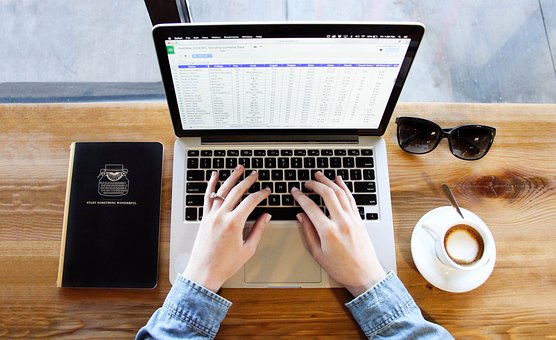 Like it or not, spread sheets are an important part of running a business. Spread sheets are used to create so many documents but the bottom line is many applications within the spread sheet requires math. In addition, spreadsheets can be used for assessments in the math classroom.
Like it or not, spread sheets are an important part of running a business. Spread sheets are used to create so many documents but the bottom line is many applications within the spread sheet requires math. In addition, spreadsheets can be used for assessments in the math classroom.Education world states spreadsheets help facilitate inquiry and analysis, explore elementary algebra as they use functions and function tables.
In addition, students can observe patterns as values are changed, can do data analysis with dynamic graphs which adjust as data is added or changed, or they can compare and contrast real life data with theoretical data. Research indicates that the use of spreadsheets in the classroom is a step towards creating student centered classroom.
What is so cool, is the use of spread sheets for sequences such as arithmetic, geometric, triangular, squared, cubed, and perhaps even the Fibonacci sequence. Create formulas for conversions of length, weight, money conversions. etc. Alphabetize lists or sort by numerical value, make dynamic magic squares, create function machines, etc.
Spreadsheets can be used to perform standard operations of multiplication, division, addition, and subtraction along with exponents, order of operations, and functions such as sum, average, minimum, and maximum. Spreadsheets are also great for finding the line of best fit when analyzing data.
According to one article I read, spreadsheets are awesome for "What If" scenarios when you want to see what certain changes do to the whole situation. For instance, if you purchase a house using an adjustable rate mortgage, what does a 1/8th percent increase do to the overall cost of the loan? How much will it change the monthly payment?. What happens if the interest drops? How does an increase or decrease change the over all cost of a 15 vs 30 year mortgage.
One suggestion from Alice Keeler who is a google guru and recently co-wrote a book on this topic is you create a vocabulary list of words for the topic in one column. Label several other columns with sub topics so students can sort the words into the proper group.
If you are not sure where to start, check out What If Math. They have a whole list of labs students can utilize in the classroom beginning with introductory labs designed to get them started. Dr Christie has another great site with links to interactive spreadsheet activities for more ideas. While you're at it check Kutztown Univeristy for more great ideas including weighted averages, creating charts, keeping a checkbook and other activities.
Remember, if you do not know how to do something, check YouTube to help you learn, then post the link in Google classroom or in a QR code so students can watch it themselves to learn. Remember, let them do most of it themselves.
I found directions so students could create their own quadratic factoring calculator using the spreadsheet. This is one of my projects to learn this year so I can have students do it next year. So Let me know what you think. Have a great day.
No comments:
Post a Comment